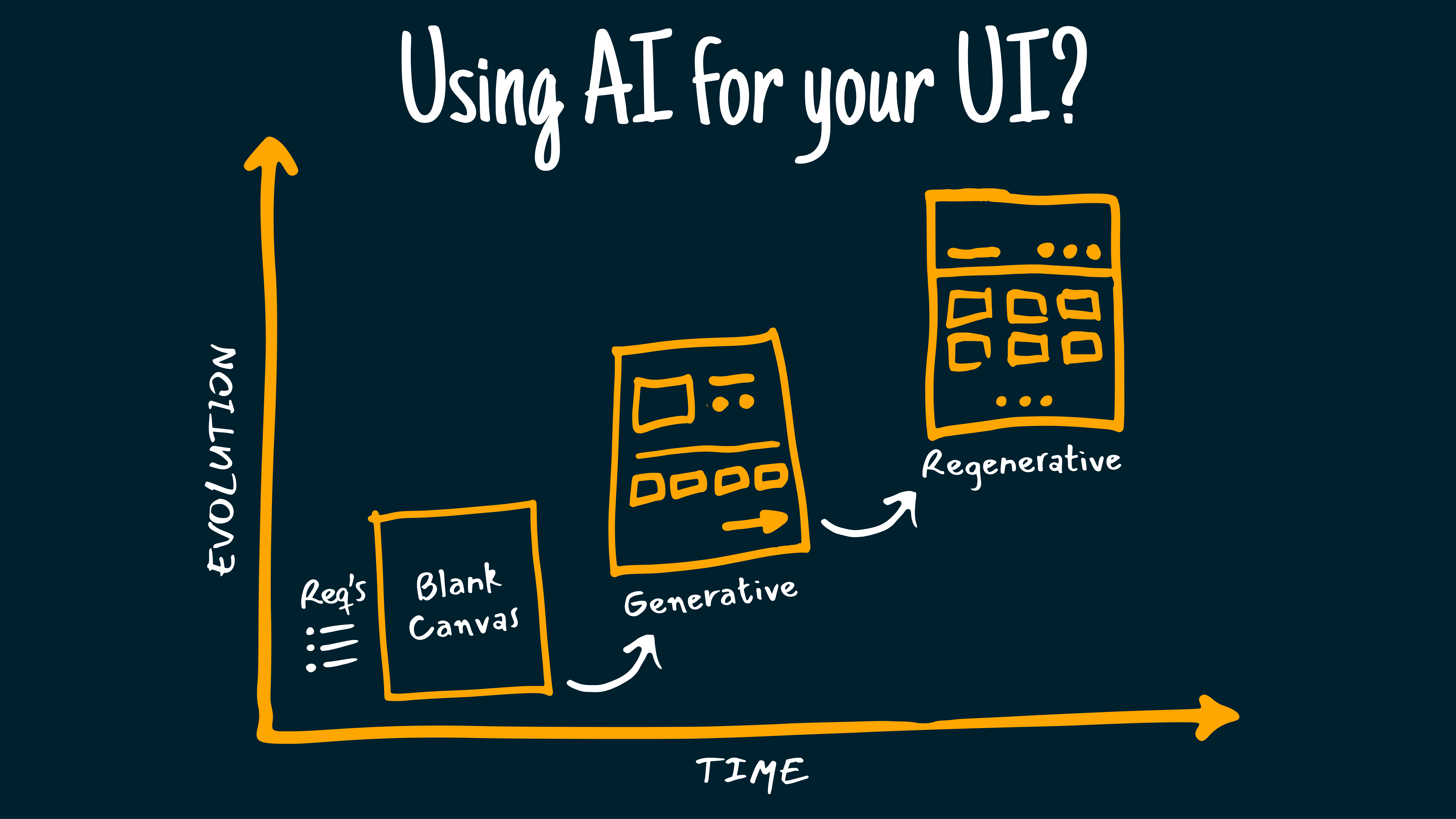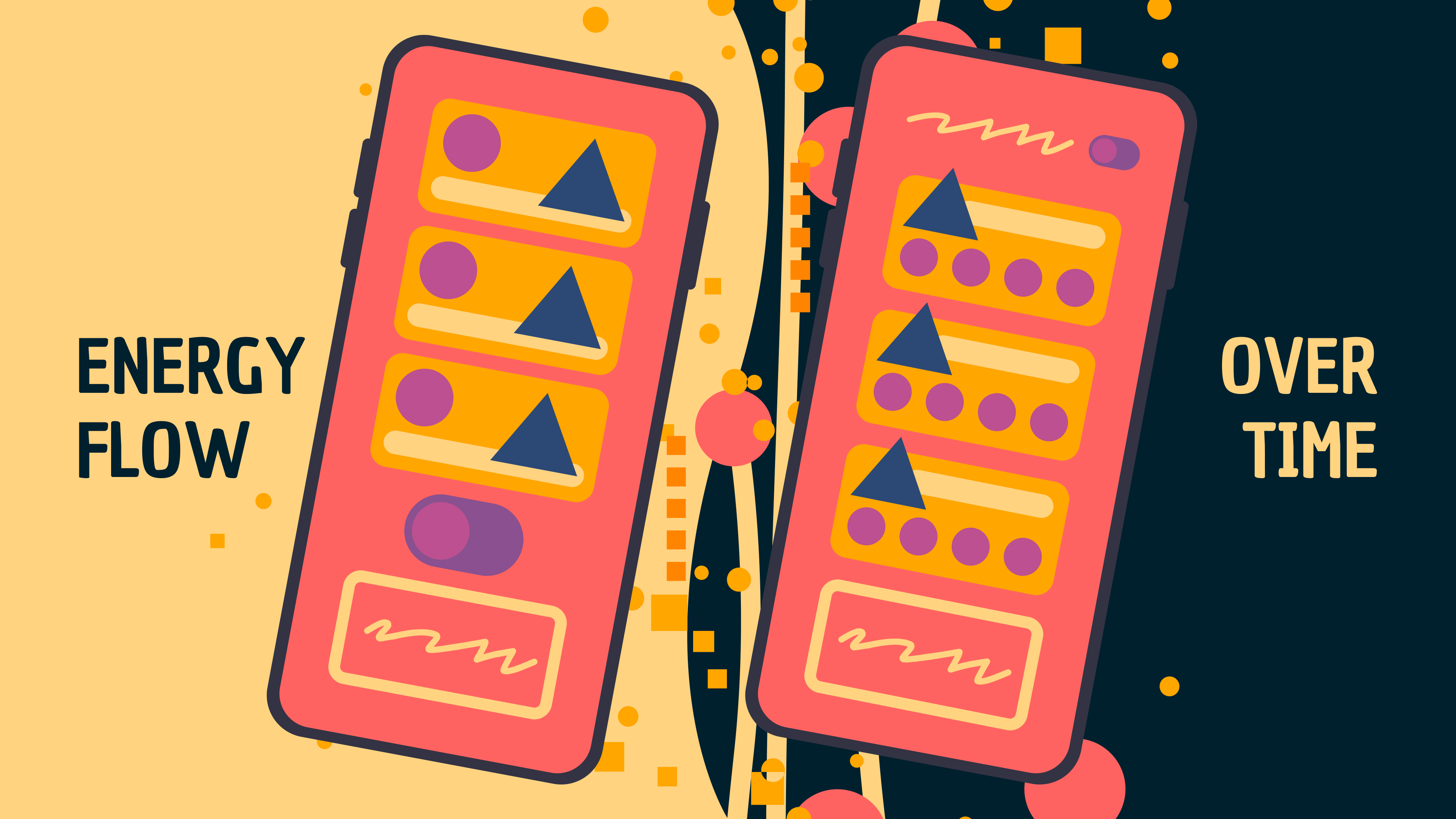
Regenerative AI for UI & Design Systems
By now most people in digital design are fully aware of generative AI and what is happening around that area of interest in the UI and Design Systems, with some very interesting views and concepts. Have you heard about Re-Generative - Regenerative Design, Regenerative AI?
While working on the PermaDesign project over the last year I gained some insights and ideas that I’d like to share as a bit of a summary of where I can see some alternatives around how this technology could work in a more regenerative sense, bringing interfaces to life and making them intelligent, by leveraging some strategies found in other areas of design, technology and nature.
In my presentation Permaculture Design Systems for a Digital Landscape, which I delivered on the new Design Systems track at Web Directions Summit 2023, I made some points about Evolutionary Design and Space Time Design that take some of these exciting developments within AI driven UI and Design Systems to new heights.
With recent conversations around where AI fits into user interfaces and design systems, most of the content seems to focus on creating sets of components that could be switched out based on what the user needs best for their experience. While this is indeed a step forward, I had something else in mind.
It’s about bringing the interface to life and making it intelligent, responding to the feedback loops of user interactions, while maintaining the integrity and consistency that a design system is well known for. Regenerating components live, either in real-time or on a more evolutionary basis, taking feedback from the energy that flows through the interface, provoking change to suit users needs over time.
There are a few concepts that I want to outline in this article with the aim of opening the discussion around these ideas and dive deeper to explore the full extent of where I see things going and what could get really interesting.
Here are some ideas around how I see Regenerative Design fitting in:
- Evolutionary Design Enabling smart interfaces that respond and adapt to user feedback over time.
- Space Time / 4D Design Based on time scale breakpoints.
- Parametric Design Designing with intent.
- PermaDesign Designing with permanence.
- Central Nervous Design Systems Feedback loops that affect the core.
Before diving into these topics, if you are unfamiliar with the PermaDesign work mentioned above, please check out the conceptual design system and you can watch the Permaculture Design Systems for a Digital Landscape.

Evolutionary Design
Enabling smart interfaces that not only adapt to the current situation, they also evolve and integrate positive changes for longer term success of components.
Also known as Continuous Design, is an incremental design approach that enables components to improve over time based on parameters or imposed limitations. Designing this way provokes thinking where one must consider future possibilities around how components move, change, scale and transform.
Fitness functions are used in software development to keep the ongoing changes of the system in check. A similar function to ensure that that elemental evolution stays on track could be used for these smart interfaces also.
This could mean interface elements respond to individual or collective users needs and energy throughput, either in real-time or over time - where Space Time or 4D UI Design comes in.
Check out the definition of Evolutionary and Continuous Design https://en.wikipedia.org/wiki/Continuous_design
Space Time / 4D Design
Thinking in the fourth dimension takes designers out of the now, out of the ship date or sprint cycle and moves them into a space where all things must be considered for the success of an evolving smart interface.
Based on time scale breakpoints, kind of like mobile breakpoints and version control combined, but going forwards in time as well.
This would allow for sets of evolution or permutations to be considered ahead of time and set in place, so that automation can fill in the blanks. Keeping things on brand and inline with the overall experience in a milestone type environment.
Hello Figma, I’d love to talk to you about this :D
Parametric Design
Designing with intent and setting up parameters that are adhered to, which could also evolve. These parameters could be of the components themselves or surrounding elements or the landscape and environment in which the components sit, causing an evolution in what is presented to the user.
Parametric design is something that has been used in architecture, where components form is determined by algorithms, defining parameters and rules around relationships of design elements, their intent and intended response.
Check out the definition of Parametric Design https://en.wikipedia.org/wiki/Parametric_design
PermaDesign
A newer concept, borrowing from the natural design system of Permaculture. This framework observes patterns of nature, also known as biomimicry.
Allowing for energy to drive evolution, capturing the collective response to energy flowing through the system and its components, providing the interface with the ability to mutate and morph into subtle or drastic new forms to cater for evolving functional needs of users.
Rather than upgrading and replacing components, if the component is generally stable, they can stay in place and become more relevant to the growing needs of an ecosystem by transforming to suit.
Another important point about PermaDesign is how components form groupings or sit in relation to one another and how these relationships and interactions should affect components or views. In Permaculture all elements of a design are considered for their function, form, scale and how these properties might interact with other elements of the system.
Central Nervous Design Systems
As interface elements and components evolve in response to user feedback loops, they need to be reflected back into the design system. This is where a classic design system upgrades to become more of a central nervous system.
By reflecting happy evolution that occurs in the frontend, within the design system, it provides for active development and intention setting based on where things sit on the user side. Allowing for further intentions and parameters to be set and interface elements tweaks for future growth and evolution.
Regenerative Design
Another interesting question around all of this is how sustainable using AI to generate brand new experiences on a per user basis is.
By evolving components based on users needs and the energy that flows through an interface back into a central system where brand, business and experience decisions can be made and related components curated accordingly, I would like to think that this could reduce the resources required to generate as new on a continuous basis.
Will you be going regenerative?
As there is growing efforts to colonise new realms of an ever changing landscape that is the digital space and the uprise of AI-everything, it is a great time to look at things holistically and see where they could head beyond the immediate future.
It’s tempting to just install a plugin and let it go nuts or inadvertently staying in an old mindset way of doing things, creating blocks that conditionally switch out or super drastic evolutions that inevitably alienate users.
There is plenty of space for new ideas to emerge within the scope of automation and design as we are seeing on a constant basis. How are you applying future thought to this?